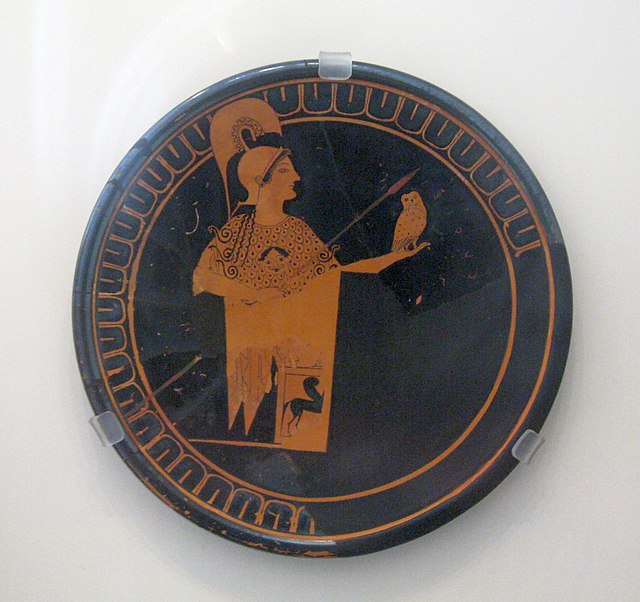The Gorgons, in Greek mythology, are three monstrous sisters, Stheno, Euryale, and Medusa, said to be the daughters of Phorcys and Ceto. They lived near their sisters the Graeae, and were able to turn anyone who looked at them to stone. Euryale and Stheno were immortal, but Medusa was not and was slain by the hero Perseus.
Running Gorgon; amphora, Munich, Staatliche Antikensammlungen 2312 (c. 490 BC)
Perseus beheading Medusa; Metope from Temple C at Selinus, Antonino Salinas Regional Archaeological Museum 3920 B (sixth century BC)
Athena wearing her snake-fringed Gorgon aegis; plate attributed to Oltos, Munich, Staatliche Antikensammlungen F2313 (c. 525–475 BC)
Fig. 1. Centaur-bodied Gorgon (Medusa) being decapitated by Perseus with averted gaze; Boetian relief pithos, Louvre CA 795 (mid seventh century BC
In Greek mythology, Medusa, also called Gorgo or the Gorgon, was one of the three Gorgons. Medusa is generally described as a woman with living snakes in place of hair; her appearance was so hideous that anyone who looked upon her was turned to stone. Medusa and her Gorgon sisters Euryale and Stheno were usually described as daughters of Phorcys and Ceto; of the three, only Medusa was mortal.
Classical Greek gorgoneion featuring the head of Medusa; fourth century BC
An archaic Medusa wearing the belt of the intertwined snakes, a fertility symbol, as depicted on the west pediment of the Temple of Artemis on the island of Corcyra
Coins of the reign of Seleucus I Nicator of Syria (312–280 BC)
An ancient Roman carving of the Medusa, now a spolia in use as a column base in the Basilica Cistern








